Most wine drinkers know that tannins are important for a good wine. But what exactly are tannins and why are they important? What are tannins in wine? What is the use of tannins & why do some get headaches from tannins? The difference in tannin in red and White wine† The answers to all these questions can be found in the blog below.
Tannins are an important component of wine and their presence can be felt in both the aroma as the taste of the final product. Tannins come from the grapes themselves, but also from the oak barrels in which wines are often aged. Wine professionals must be careful with the tannin content in wine, as too much or too little can affect the taste.
It gives the wine its astringent quality and can also contribute to a wine's aging potential. When properly managed, tannins can add complexity and depth of flavor to a wine. However, if too much tannin is present, it can make a wine taste harsh and unbalanced. It is important for winemakers to find the right balance in the wine to create a delicious and enjoyable final product.
Tannins important for Red wine
If you drink wine, you've probably heard someone talk about the tannins in wine, but you may not know what they are or why they matter. Knowing what this term means is not a necessity to enjoy a glass of wine, but it can help you better understand the wine you're drinking and even why some wine causes headaches.
Tannins are natural compounds found in grape skins, seeds and stems. The scientific word for these compounds is polyphenols. Polyphenols are released from the skins, seeds and stems when they are soaked in the grape juice after the grapes are pressed. The tannins give certain wines such as Merlot their characteristic dryness. You experience the effect of tannins when you drink a wine that causes a drying sensation in your mouth. Depending on how dry your mouth, you can determine whether a wine is too high or too low in tannins.
Tannins are an important part of what red wines make it taste like they do, and they also play a role in how long a Red wine can be stored before it spoils. The amount of tannins in white wines is much lower, so other factors such as acidity and sugar content have more influence on how long those wines stay fresh. There are different types of tannins that can be affected by things like the type of grape used, the climate the grapes were grown in, and how the wine was made. Paying attention to the tannins in a wine can give you clues to how developed it is and how long it could take if you let it age.
Fermentation of grapes
Grapes are harvested to extract tannins, which are composed of two classes of phenols known as flavonoids and non-flavonoids. Tannins are formed when these phenols bind together to form polymers. This process is called polymerization. Non-flavonoids also play a role in the formation of tannins, but flavonoids are the main contributors when it comes to flavor and wine structure.
Grapes are harvested when they are ripe and ready to be made into wine. The process of harvesting grapes is called picking, and it involves removing the grapes from their stems and placing them in a container. After the grapes are picked, they are crushed and pressed to release their juice. The juice is then fermented to make wine.
Taste and texture
Tanins are an important part of the taste and texture of Red wine. They are produced by the grapes during the ripening process and are mainly found in the skins and pits of the grapes. However, the amount and quality of the tannins differs greatly depending on the grape variety, location and ripening process of the grapes.
Tannins, also called condensed tannins or proanthocyanidins (PAs), are polyphenolic compounds that are widely distributed in the plant kingdom. They are secondary metabolites produced by plants to adapt to and protect themselves against biotic and abiotic stressors.
In wine, they are one of the most important quality factors due to their contribution to organoleptic properties such as colour, astringency and bitterness. While tannins in wine can come from microbial and oak sources, the main sources of polyphenols are grape skins and seeds.

Red wine
What makes a wine with strong or weak tannins depends on how long the grape juice sits together with the skins, seeds and stems at the same time after the grapes are pressed. The longer the peels, seeds and stems soak in the juice, the more tannin characteristics they will impart. This explains why red wines have stronger tannins than white wines. When producing a Red wine the winemaker wants the chips to give more color, so more tannins are naturally added to the juice. Further, by extracting the characteristics of tannins, they are able to add a deeper complexity to the wine.
Wine with a low tannin content
- Merlot
- Pinot Noir
- Grenache
- Zweigelt
Wine with a high tannin content
- Cabernet Sauvignon
- Frankovka (Blaufränkisch)
- Plavac Mali
- Nebbiolo
- M
- Montepulciano
- Petit Verdot
- Syrah / Shiraz
- Little Sirah
- Tannat
Scientific research on tannins
Since the 60s, this topic has been extensively studied by a large number of researchers who have studied different types of wine, climatic conditions, cultivation methods and grape varieties. Because this one onderzoeken performed under different conditions, the collected data may be contradictory. Therefore, the question remains: what factors influence the biosynthesis, amount and distribution of tannins in grape seeds and how can winemaking processes influence the extraction of tannins from seeds in wine?
Tannins are the result of the polymerization of flavanols, also called flavan-3-ols, which are the most reduced form of flavonoids. The structure of tannins depends on the flavan-3-ols starter and extension units, the position and stereochemistry of the linkage to the lower units, the degree of polymerization, and the presence or absence of modifications of the 3-hydroxyl group. The most common monomeric units in proanthocyanidins are (+)-catechin and (-)-epicatechin.
Influence of the harvest time
At harvest time, about 10% of the extractable phenols can be found in the grape pulp, 28 to 35% in the skins and 60 to 70% in the kernel. In addition, research shows that the tanins in the skin of the grape have a higher degree of polymerization than those in the kernel, and that the kernel again shows more galloylation than the skin.
Research also shows that different viticultural techniques, such as pruning, thinning, leaf removal and irrigation, influence the amount and quality of the tannins in the kernel.
Determining the right harvest time remains a challenge for winemakers, as there is no reliable and easy way to measure the ripeness of the tanins in the pit. This is why people often wait until the kernels are uniformly brown, which can lead to higher sugar contents and therefore more alcohol during maceration. More research on the metabolism of tanins by the grape seed could help to find better markers of ripeness and thus develop a better tool for measuring the ripeness of the tanins in the grape seed.
In addition, various techniques can be applied to optimize the extraction of tannins during the winemaking process and thus improve the quality of the wine.
The winegrower's dilemma
As a wine lover you would like to know that it can be a challenge for a winemaker to harvest the grapes at the right time. Although the grapes may be sugar ripe, this does not automatically mean that the smell and taste aromas are fully developed. This can result in a wine that is too sweet and has little depth or nuance. To get the best possible grapes, it is important that the grapes are ripe as a whole, including the skins and pips where the tannins are located.
If it has been very warm and sunny during the year, the grapes can quickly become sugar ripe, while they are not yet phenolically ripe. This creates a dilemma for the winemaker. If he harvests the grapes at this time, he risks making wine from grapes that are too bitter and too little aroma's have. If he waits to harvest, the grapes will grow more sugar build while the acids to decrease. As a result, the grapes can become overripe and bombastic wines are created with little freshness and a lot of alcohol.
In ideal conditions, the grapes ripen slowly and steadily in moderate weather conditions, so that physiological and phenolic ripeness occur approximately simultaneously. Unfortunately, it can also happen that the grapes are not ripe at all or that they have to be harvested too early due to bad weather in autumn.
What is the taste of tannin?
Tannin does not have a particular taste or smell. Tanins themselves are subtle, but the substance does influence your perception of how something may taste. Tannin is a natural chemical compound found in plants, including grapes. Tanins in wine can cause a drying sensation in the mouth. Tannins can also affect the taste perception of other compounds in wine, making them appear more or less intense. In addition to their influence on taste, tannins can also influence the color and mouthfeel of wine.
The taste of tannins is subtle and can add different sensations to wine, from soft and round to leathery, sharp and aggressive or coarse. Tannins can be described as the 'mouth feel' of wine. Tannins are important in wine because they add structure and can help preserve the wine. However, too much tannin can make wine astringent and bitter. The tannin content in wine can be influenced by the grape variety, winemaking methods and aging process of a wine.
Cultivating tannin in the vineyardThe tannins in the grape skins develop as the grapes grow and protect them from the sun. Different grape varieties have different levels of tannins. For example, Tannat and Nebbiolo have a lot of tannins. These wines often need years of aging before they are ready to drink.
The climate and conditions in the vineyard where the grapes are grown affect the levels and types of tannins that develop in the grapes. Tannins are compounds that give wine its astringent taste and can make it dry feels in the mouth. Cooler climates and vintages, as well as grapes picked earlier, tend to yield wines with more aggressive tannins – more astringent and less polymerized (smaller). Warmer climates and vintages and grapes harvested later will have more developed, softened and polymerized (larger) tannins.
The tannins in the grape skins act as a natural sunscreen and protect the grapes from too much sunlight. The tannin content is highest in grapes grown at high altitudes, where the sunlight is more intense. This results in wines with more intense tannins.
Grapes are harvested when they are ripe and ready to be made into wine. The type of grape, climate and growing conditions all play a role in the amount of tannin that develops in the grape. Tannin is what gives wine its flavor and sharpness. More tannins means a fuller wine. Less tannin results in a lighter wine.
How grapes are harvested for winemaking is an important process that can affect the taste of the final product. Exposure to oxygen during winemaking can cause the tannins in the grapes to polymerize, affecting the wine's flavor and aging potential. Winemakers must carefully control oxygen exposure to produce wines with the desired characteristics.
Extract tannin from grapes
There are several techniques winemakers can use to extract tannins and refine a wine's structure, including micro-oxygenation. This process introduces oxygen into the wine to soften the hard tannins. Some winemakers use micro-oxygenation to great effect on Tannat grapes, which are known for their strong tannins. The process can also be useful for other grape varieties such as Syrah and Grenache. Microoxygenation is usually done during extended maceration (the process of soaking crushed grapes in their own juice) or after pressing, but before malolactic fermentation.
It is important to note that this is not the controversial form of micro-oxygenation that can prematurely soften wines and shorten their lifespan. If done before malolactic fermentation and sulfur dioxide are added, oxygen can be used to make intricately structured wines with better mouthfeel and texture.
However, oxygen exposure must be carefully controlled to achieve this desired effect – too much or too little oxygen has negative consequences. Wines treated with this type of micro-oxygenation usually take longer to be drinkable, but their structure allows them to elegantly produce herbaceous aroma's and Brettanomycesaroma's and extend the life of the wine.
The tannins in grapes are important for the taste, shelf life and aroma of a wine. To get the right amount of tannins in a wine, winemakers must carefully control every step of the grape growing and winemaking process. This includes choosing the right grape variety and vineyard location, as well as checking how the grapes are pressed during winemaking. There is no one-size-fits-all solution to this, so every winemaker has to find the best way to produce the wine they want.
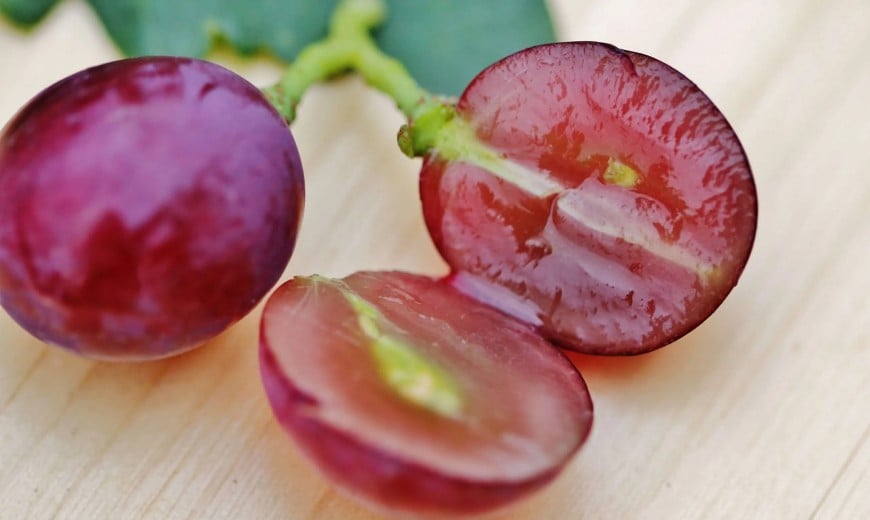
Tannins in fruits and other foods
The tannins in wine can come from the grape skins, seeds, stems, oak wood and additives. The skin tannins are large and can be polymerized from 4 to 100 monomers. Seed tannins are shorter and smaller and consist of 2 to 20 polymerized monomers. Stock tannins vary in size; they can be as small as seed tannins or as large as skin tannins. In addition to the size variation in tannins between these three sources, the shape of the molecules can vary significantly from source to source.
Grapes are harvested when they are ripe and ready to be made into wine. The process of harvesting grapes is called vinification. To harvest grapes, farmers use a machine called a harvester. The harvester shakes the vines gently to loosen the grapes from their stems. The grapes are then sorted by quality. The best grapes are used to make wine, while the others are used for other purposes, such as making juice or raisins.
The story of tannins is complex, with many different phenolic compounds that can combine to form tannins. These tannins can be unique, like snowflakes. This makes it difficult to determine the effect each will have on wine. However, they all contribute to the overall flavor and structure of the wine.
Tannin tastes dry and astringent and you feel it specifically on the center of your tongue and the front part of your mouth. Unsweetened black tea is a great example of nearly pure tannin dissolved in water. Foods with a high tannin content:
- tea leaves
- Walnuts, Almonds, other nuts with shell
- Dark chocolate
- Cinnamon, cloves and other unground spices
- Blackberries, Pomegranates, Grapes and Açaí Berries
- Red beans
- The skin of olives, sometimes it is also in olive oil present
Tannins as an antioxidant
Winemakers also like tannins because they act as a natural antioxidant to protect the wine. This is actually an important reason why certain red wines as Merlot en Cabernet Sauvignon can last for years. These wines also have great health benefits for humans! The only downside to tannins is that they can give people a headache. A good way to test whether you are prone to tannin headaches is to determine whether similar substances that are strong in tannins, such as dark chocolate and strong black tea, have the same effect.
Tannin protects the wine against all kinds of bacteria and prevents the wine from going bad. Tannin is a natural preservative. This allows the Red wine be kept much longer than white wines. In white wines often few tannins are present, which means that you White wine so often can not keep too long. In contrast to Red wine contains White wine much more natural wine acids, like Grasevina, Pinot Grigio, Gewürztraminer, Riesling, Chardonnay en Posip.
Tannin complaints are rare, usually we only get a wine headache from consuming too much, but if you realize that you really suffer from tannin then you better White wine drink, which is very low in tannin. This way you can also solve your headache caused by tannins!


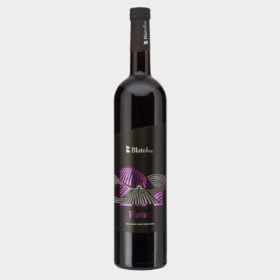

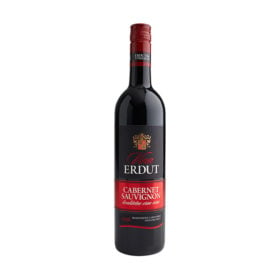


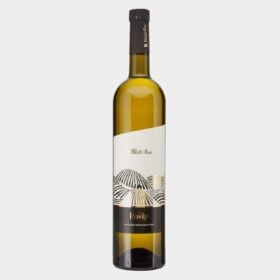

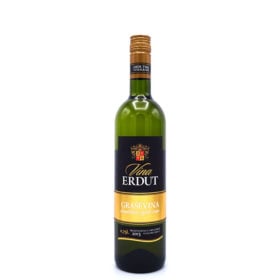
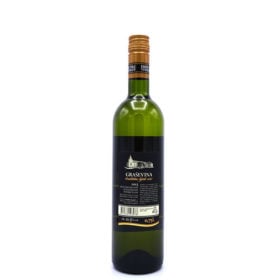


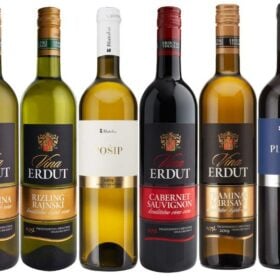

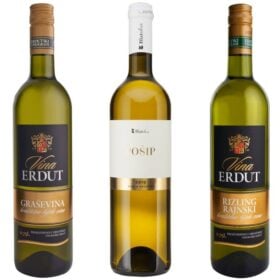
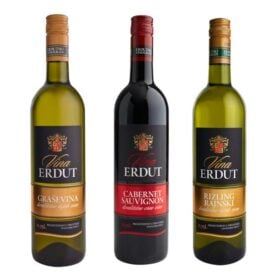
As for Tannins in wine. I get a rash there on my skin
Chances are you have an intolerance to tannins in wine.
Hey, do you happen to know how tannins are extracted from the grapes, being the process?
This would be a big help for my thesis
mvg
Oba De Beule
Tannins are extracted from grapes by crushing the grapes and then separating the juice from the solids. The juice is then left to ferment for a while, removing the tannins from the grape skins. The end product is a wine with a high content of tannins, which give the wine its characteristic taste and mouthfeel.